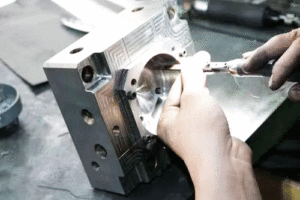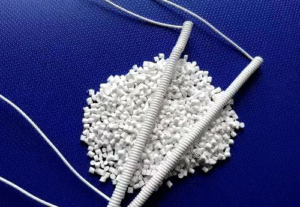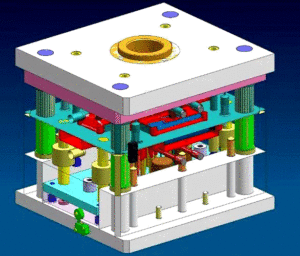
Polishing Treatment for Plastic Molds
Polishing Treatment for Plastic Molds With the widespread application of plastic products, such as daily-use items and beverage packaging containers, there is often a requirement
The layout of the production workshop is designed with a focus on two aspects: optimizing the layout according to the production process while meeting specific production conditions that require flexible energy use.
1.1 Power Supply: Ensure an adequate and stable power supply for production without excessive surplus that leads to unnecessary energy consumption.
1.2 Establish efficient cooling water circulation facilities and provide effective insulation for the cooling water system.
1.3 Optimize the overall production layout of the workshop. Many production processes require coordination between different stages, and a rational arrangement can reduce turnaround time and energy consumption, thereby enhancing production efficiency.
1.4 For facilities such as lighting in the workshop, consider separate control with the most efficient small units.
1.5 Perform regular maintenance of workshop equipment to avoid disruptions to normal production operations due to damage to shared facilities, which can result in increased energy consumption.
Injection molding machines are major energy consumers in the injection molding workshop, with energy consumption mainly attributed to motors and heating.
2.1 Select appropriate injection molding machines based on product characteristics.
2.2 Opt for all-electric and hybrid injection molding machines, which offer excellent energy-saving results, saving between 20-80% of energy.
2.3 Implement new heating technologies, such as electromagnetic induction heating and infrared heating, to achieve heating energy savings between 20-70%.
2.4 Apply effective insulation measures for heating and cooling systems to reduce heat and cooling losses.
2.5 Maintain good lubrication of equipment transmission components to reduce energy consumption resulting from increased friction or unstable equipment operation.
2.6 Use low-compression hydraulic oil to minimize energy waste in hydraulic system operation.
2.7 Implementing processing techniques like parallel actions, multi-cavity injection molding, and multi-component injection molding can significantly save energy.
2.8 Traditional mechanical hydraulic injection molding machines also have various energy-saving drive systems, providing a notable energy-saving effect compared to traditional fixed-pump mechanical hydraulic injection molding machines.
2.9 Regularly maintain the heating and cooling pipelines to ensure there are no impurities or scaling blockages inside the pipes, achieving the designed heating and cooling efficiency.
2.10 Ensure the injection molding machine is in good working condition. An unstable processing process can lead to defective products and increased energy consumption.
2.11 Ensure that the equipment used is suitable for the products being processed, as PVC processing often requires a specialized screw.

The mold structure and condition often have a significant impact on the injection molding cycle and processing energy consumption.
3.1 Proper mold design, including runner design, gate type, number of cavities, heating and cooling channels, all contribute to energy savings.
3.2 Using hot runner molds can not only save materials and reduce material recycling energy consumption but also has significant energy-saving effects during the molding process itself.
3.3 Imitating quick-cooling and quick-heating molds can significantly save processing energy and achieve better surface quality.
3.4 Ensuring balanced filling of all cavities helps shorten the molding cycle, ensures product quality uniformity, and has excellent energy-saving effects.
3.5 Using CAE-assisted design technology for mold design, mold flow analysis, and simulation can reduce the energy consumption of mold debugging and multiple mold repairs.
3.6 Using lower clamping force for molding while ensuring product quality helps extend the mold’s lifespan and facilitates rapid mold filling, contributing to energy savings.
3.7 Proper mold maintenance ensures the effective condition of heating and cooling channels.
4.1 Choose auxiliary equipment that matches the required capacity, meeting work demands without excess capacity.
4.2 Perform equipment maintenance to ensure they are in normal working condition. Malfunctioning auxiliary equipment can lead to production instability and even poor product quality, increasing energy consumption.
4.3 Optimize the coordination and sequence of operations between the main machine and peripheral equipment.
4.4 Optimize the positioning of peripheral equipment relative to the production equipment. Whenever possible, position peripheral equipment closer to the main machine without affecting operational conditions.
4.5 Many auxiliary equipment manufacturers provide on-demand energy supply systems, which can result in significant energy savings.
4.6 Use quick mold-changing equipment to reduce the waiting time required for switching products during production.
Different materials have varying energy consumption during processing, and poor material management or improper handling of recycled materials can lead to increased production energy consumption.
5.1 While ensuring product performance, prioritize materials with lower processing energy consumption.
5.2 When meeting usage performance and cost optimization, prioritize materials with high flowability.
5.3 Note that materials from different suppliers may have different processing requirements.
5.4 Dry materials as needed, preferably using them immediately after drying to prevent energy waste due to moisture regain.
5.5 Maintain proper material storage to prevent impurities or foreign substances from contaminating the materials, ultimately resulting in defective products.
5.6 Some products allow for the inclusion of a certain amount of recycled material. But attention should be given to the storage and cleanliness of recycled materials to avoid producing defective parts due to material impurities.
6.1 Use the shortest molding cycle while meeting product performance requirements.
6.2 Whenever possible, use the processing methods recommended by suppliers, unless there are specific influencing factors.
6.3 For specific products and molds, save all stable equipment and process parameters to reduce setup time when changing production in the future.
6.4 Optimize the processes by using lower clamping forces, shorter cooling times, and holding pressures, where applicable.
7.1 Utilize auxiliary molding technologies such as gas-assisted, liquid-assisted, steam-assisted, micro-foam injection molding, etc.
7.2 Implement unitized molding solutions to reduce intermediate processes.
7.3 Employ new techniques like in-mold welding, in-mold coating, in-mold assembly, and in-mold decoration.
7.4 Embrace new low-pressure molding techniques to shorten the molding cycle and reduce melt temperatures.
7.5 Implement energy regeneration systems.
8.1 Achieving high-quality products in a single production cycle with reduced defect rates is the most significant energy-saving measure.
8.2 The maintenance and operation of the entire production system are closely related to energy consumption. This not only involves the main machine but also peripheral and factory equipment.
For example, if there is a breakdown in the mold-changing crane in the workshop, and manual mold changes are required, it will inevitably extend equipment waiting times, leading to increased energy consumption.
8.3 Implement an energy consumption monitoring system in the workshop to facilitate purposeful energy analysis and improvements by the company.
8.4 During equipment downtime for maintenance and repairs, it’s important to check not only the maintenance aspects and items of the equipment itself but also the conditions at the connections with other systems and the reliability of its performance.
8.5 Regularly compare performance with industry benchmarks to identify further improvement opportunities.
8.6 Establish reliable contracts and partnerships with suppliers, which can be beneficial for the company’s energy management.

Polishing Treatment for Plastic Molds With the widespread application of plastic products, such as daily-use items and beverage packaging containers, there is often a requirement

Injection Molding Techniques for TPE and TPR Injection Molding Techniques for TPE and TPR 1. Dry the TPE and TPR material before injection molding It

Winter Maintenance Measures for Injection Molding Machines As winter approaches and temperatures gradually drop, a cold chill envelops the earth. While ensuring personal warmth, it

Assessment Regulations for Mold Trial Exceeding 3 Times Assessment Regulations for Mold Trial 1. Purpose The purpose of this regulation is to standardize the work of
Injection molds should be tested for various performance parameters while the injection molding machine and mold are operating normally. The dimensions of the final molded plastic parts should be measured. With this information, you can determine the current state of the mold and identify the damage to components like the cavity, core, cooling system, and parting lines. Based on the information from the plastic parts, you can assess the mold’s damage and plan repair measures.

In the course of use, springs are the most prone to damage, often exhibiting breakage and deformation.
The solution is to replace them, and it’s important to pay attention to the specifications and models of the springs during the replacement process. Spring specifications and models are confirmed through three factors: color, outer diameter, and length. Replacement is only possible when all three factors match.
During the use of mold products, punches are prone to breakage, bending, and wear, while bushings are typically subject to wear.
Damaged punches and bushings are generally replaced with parts of the same specifications. The key parameters for punches include dimensions of the working part, dimensions of the mounting part, and overall length.
Components also need occasional fastening, so it’s important to regularly check if fasteners have become loose or damaged. The solution is to replace them with parts of the same specifications.
During maintenance, inspect the relationships between various parts for any damage, and repair the damaged sections. Check for air leakage in the pneumatic components and take measures as needed. If the air hose is damaged, replace it.
It’s important to focus on tracking and inspecting several critical components of the mold:
The ejector and guide components ensure the mold’s opening and closing motion and the ejection of plastic parts. If any of these parts get stuck due to damage, it will result in production stoppage. Therefore, it’s essential to keep the mold pins and guide posts lubricated (using the most suitable lubricant) and regularly inspect them for deformation and surface damage. If any issues are found, replace them promptly.
After completing a production cycle, it’s essential to apply professional rust-preventative oil to the mold’s working surfaces, moving parts, and guide components.
Special attention should be given to protecting the gear and rack mold bearing areas, as well as the spring mold’s elastic strength, to ensure they remain in optimal working condition.
Attention should also be given to cleaning the runners because over time, cooling channels can accumulate scale, rust, sludge, and algae. This can cause a reduction in the cross-section of cooling channels and narrow the cooling passages, significantly reducing the heat exchange rate between the cooling fluid and the mold, which increases production costs for the company.
For hot runner mold products, maintenance of the heating and control systems is beneficial in preventing production failures.

Polishing Treatment for Plastic Molds With the widespread application of plastic products, such as daily-use items and beverage packaging containers, there is often a requirement

Injection Molding Techniques for TPE and TPR Injection Molding Techniques for TPE and TPR 1. Dry the TPE and TPR material before injection molding It

Winter Maintenance Measures for Injection Molding Machines As winter approaches and temperatures gradually drop, a cold chill envelops the earth. While ensuring personal warmth, it

Assessment Regulations for Mold Trial Exceeding 3 Times Assessment Regulations for Mold Trial 1. Purpose The purpose of this regulation is to standardize the work of